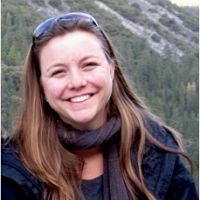Orem & Pelletier
Using airborne and terrestrial LiDAR to quantify and monitor post-fire erosion following the Las Conchas fire, Jemez Mountains, New Mexico
Orem C.A. and Pelletier J.D. (2013)
Abstract presented at Chapman Conference on Post-wildfire Runoff and Erosion Response, Estes Park, Colorado, 25 - 31 August
-
Catalina-Jemez, GRAD STUDENT
-
Catalina-Jemez, INVESTIGATOR
Abstract
Wildfire in the western U.S. is increasing in severity, frequency, and area. Current LiDAR technology provides an effective way to describe and quantify post-fire erosion features and their associated processes. In this study we use airborne laser scanning (ALS), repeat terrestrial laser scanning (TLS), and field observations over two years to document the post-fire erosion and deposition of two debris-flow fan deposits located below neighboring small (approximately 1 km2) upland catchments burned by the Las Conchas fire in 2011. Both catchments are similar in size, topography, and burn area and severity. An intense rainfall event shortly after the fire resulted in debris flows in both catchments. Deep channel scouring and debris flow deposits are extensive in the valley bottoms of both catchments and indicate that much of the sediment removed was reworked valley fill. FLO-2D software was used to model the initial debris flow event over the fan surface. Sediment concentrations of approximately 30% indicate that the debris flow transitioned to a hyperconcentrated flow near the head of the fan. ALS- and TLS-derived bare-earth DTMs were differenced to calculate erosion, deposition, and net sediment volumes for both debris-flow fans. The results show that immediately following wildfire, post-fire erosion and sediment yield to the fan surface is at its highest, but exponentially decreases as less material is conveyed to the catchment outlet. Although the two basins are similar in both topographic and burn characteristics, one catchment yielded approximately twice as much sediment as the other. Possible explanations for the different response include differences in precipitation, sediment availability, and channel length.
Citation
Orem C.A. and Pelletier J.D. (2013): Using airborne and terrestrial LiDAR to quantify and monitor post-fire erosion following the Las Conchas fire, Jemez Mountains, New Mexico. Abstract presented at Chapman Conference on Post-wildfire Runoff and Erosion Response, Estes Park, Colorado, 25 - 31 August.
Explore Further


